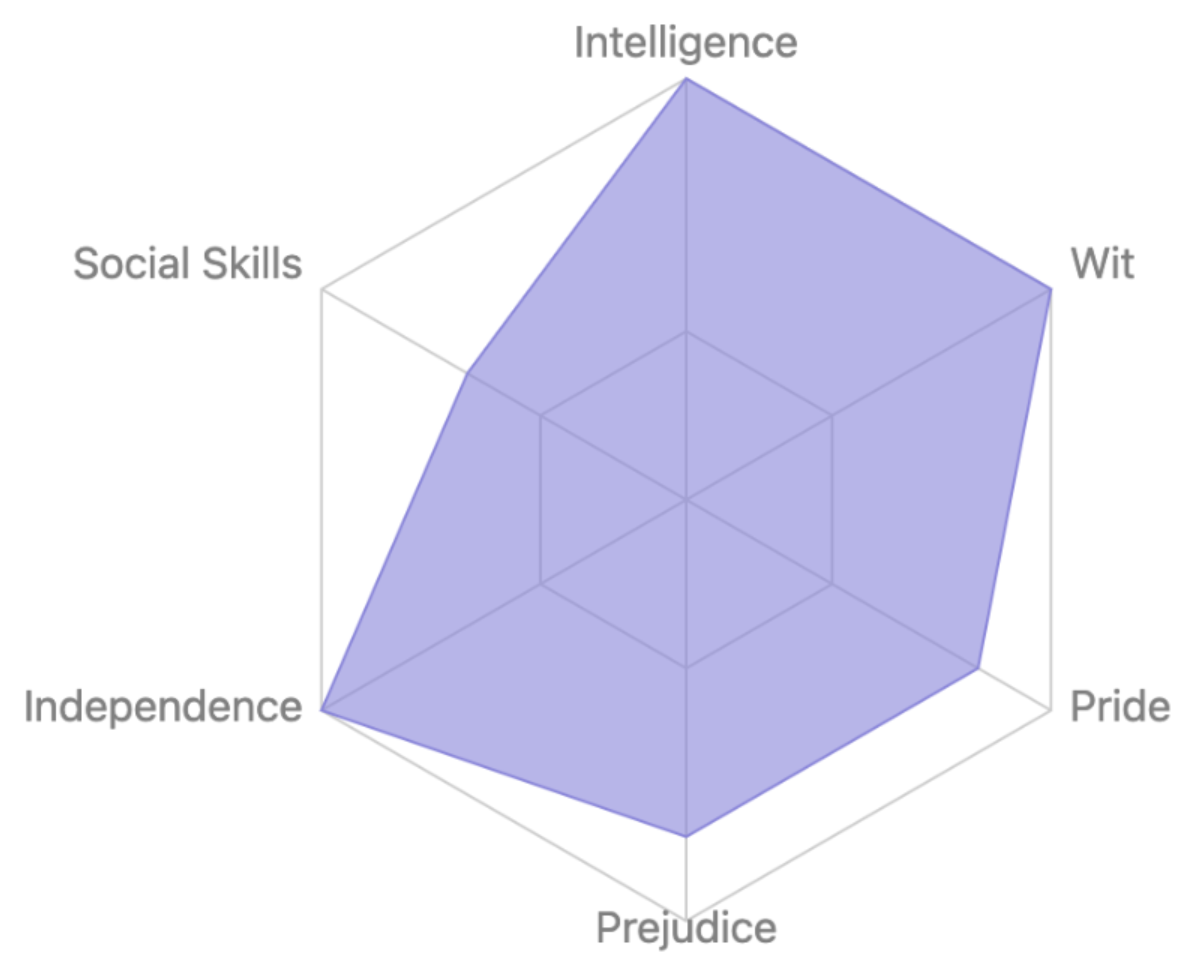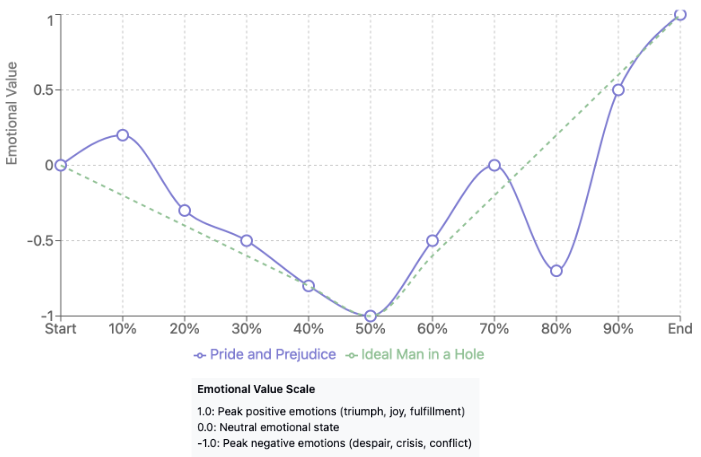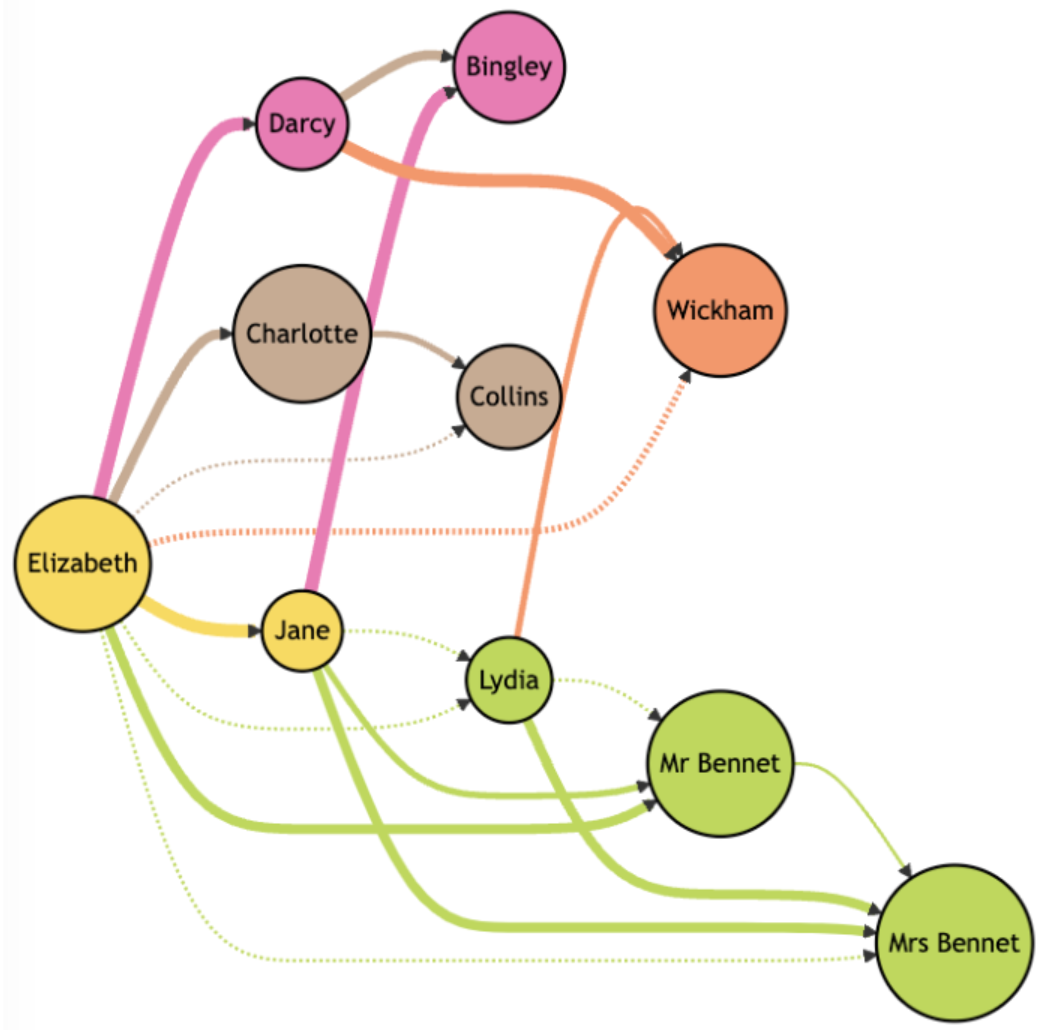

Editorial Snapshot
Analysis of core character’s traits, development and emotional arc.

Most character arcs can be categorized into one of 6 basic structures. Elizabeth's arc most closely follows the "Man in a hole" (fall-rise) pattern. This structure is particularly powerful because it mirrors common human experiences of overcoming adversity. The power of this structure lies in its reflection of resilience and growth through adversity - themes that resonate deeply with human experience.

Elizabeth is a well-crafted protagonist whose journey feels authentic and engaging. Her wit and intelligence make her stand out from typical romantic heroines of the era, while her flaws (particularly her quick judgments) make her relatable to readers.
The character is fundamentally strong - these suggestions aim to enhance what's already working well.
Analysis of different relationships between the characters. Strong relationships are represented as thicker lines.

The graph's structure shows Elizabeth as the central character, with relationships radiating outward through family (green), romance (pink), friendship (tan), and conflict (coral), reflecting the novel's exploration of marriage, family dynamics, and social class.
This analysis helps identify areas for relationship development, conflict generation, and character growth throughout the narrative.
Analyzes the pacing of the story over narrative time, where the readers will be turning pages more quickly and where they will be doing more slowly.
